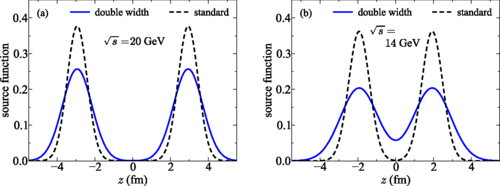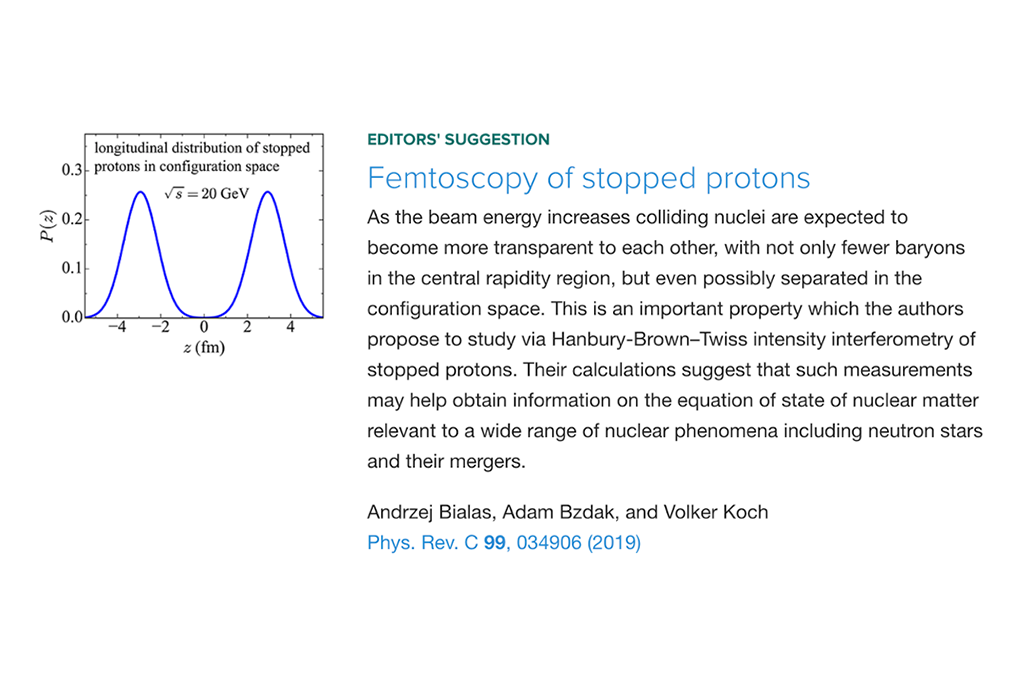Andrzej Bialas, Adam Bzdak, and Volker Koch, Femtoscopy of stopped protonsicro, Phys. Rev. C 99, 034906 (2019).
The longitudinal proton-proton femtoscopy (Hanbury Brown–Twiss) correlation function, based on the idea that in a heavy-ion collision at √s≲20GeV stopped protons are likely to be separated in configuration space, is evaluated. It shows a characteristic oscillation which appears sufficiently pronounced to be accessible in experiment. The proposed measurement is essential for estimating the baryon density in the central rapidity region and can be also viewed as an (almost) direct verification of the Lorentz contraction of the fast-moving nucleus.
 Figure: Time integrated source function for stopped protons as a function of z for (a) √s=20GeV and (b) √s=14GeV. The black dashed lines represent the result of our model calculation while the blue solid lines are obtained by doubling the value of width of the collision point distribution, Γc. The source functions shown are normalized to unity.
Figure: Time integrated source function for stopped protons as a function of z for (a) √s=20GeV and (b) √s=14GeV. The black dashed lines represent the result of our model calculation while the blue solid lines are obtained by doubling the value of width of the collision point distribution, Γc. The source functions shown are normalized to unity.
